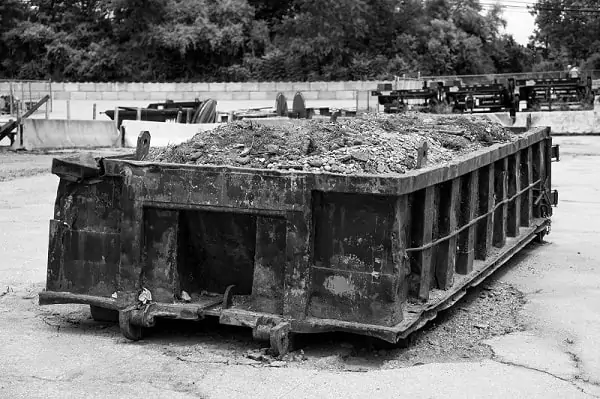A leaky roof is one of the worst things that can happen to your home in the long term. If you leave it unfixed, even the smallest roof leak can spread, leading to widespread water damage, mold, and potentially even structural problems for your house. Mold is the biggest risk, though, as it can cause significant health problems as well as simply looking unpleasant. It can be tricky to get rid of, so it is important to try to fix a roof leak as fast as possible before it has time to spread and cause problems.
Cape May, New Jersey is fully served by Eagle Dumpster Rental.
We are going to walk you through some basic steps for finding and repairing a roof leak, starting with the basic DIY options and moving on to more advanced fixes if things get serious. Below, you will find a complete guide to finding and fixing leaky roofs!
Step 1: The First Signs of a Leak
In most cases, the first signs of a leaky roof that you will notice will simply be water dripping from your ceiling when it rains. However, there are other signs you can keep an eye out for, and some of these might give you an earlier indication of a leak than just waiting for the drips. Several of them are visible even when it is not raining, too, making it even easier to spot the signs of a leak before it gets too bad.
Keep an eye out for changes in your house, like new stains on the ceiling, bulging patches on your interior walls, or strange musty smells in certain areas or rooms of your home. There are also exterior signs that might be visible, like spots and damp patches on your external walls or missing or warped wooden shingles on your house.
All of these signs are possible indications that you have a leak. However, they will not tell you exactly where the leak is. In order to locate exactly where a leak is in your home, a bit of searching is going to be necessary.
Step 2: Inspecting the Attic for Leaks
Finding a leak in your roof is going to mean getting as close as you can to the roof. In most cases, that means taking a flashlight and going up into the roof cavity or attic. Be careful with this particularly if there has been some water damage. It can be easy to put your foot through the ceiling if you are not careful. Examine the roof sheathing and rafters for water stains, mold, or black marks.
Often, small water stains can be caused by exposed nails. That does not mean there is a leak, though – warm indoor air can cause condensation on the nails and form small water stains. In this case, you can simply clip off the head of the nail with a sturdy set of pliers. What you are looking for here is larger stains or moldy spots.
If you do not have any attic space, then moving on to checking the exterior of the roof is your best bet. If you are living in an apartment without direct access to the roof or renting a building from a landlord, contact your property manager or landlord immediately, and they will be able to bring in a contractor to find your leak and repair it.
Step 3: Testing your Roof
If at this point, you still can’t find the leak, it is time to make it visible. Get someone else to stand inside, near where you first saw traces of a leak. Then, head up to the roof with your garden hose. Working slowly and carefully, soak your roof in small sections. Spend several minutes on each section to make sure you cover every spot and wait for your helper to notify you when they spot a wet patch or a drip. Working carefully in small sections like this means you can narrow down where the leak is. If water comes through while you are soaking a small area, that means the leak is somewhere in that section!
Step 4: DIY Repairs
When you have found the leak, it is time to fix it. If you have got the right tools and knowledge, it should be possible to do this as a DIY project. Depending on what sort of leak it is, there are a few different ways you can try to repair it.

If your leak is due to a damaged shingle, then you will need to replace that shingle. Remove the nail holding it down, and scrape away any remaining traces of roofing cement from the area. Get a new shingle, apply some new cement, and nail the shingle into place.
If your leak is due to a plumbing vent boot problem, then it is time to replace the boot. Replacements can be easily found in most hardware stores. You might not need to do that, though; if the boot is in good condition, then you can just replace the screws. Using rubber washer replacement screws rather than regular screws should prevent further leakage.
If your leak is around the edge of a window, chimney, or vent, then all you need to do is replace the caulk around that element. This is an easy process that should fill any gaps very effectively.
Step 5: Call In the Professionals
If your problem seems too serious to fix yourself, or you do not have the required tools, then it is time to call a professional to help. Do this as quickly as possible, before the damage gets any worse! Professional roofers will be able to identify just how bad your roof is and give you a quote for repairs. That could range from simply replacing the flashing around the roof to replacing the entire roof from scratch. Either way, they will be able to help when you can’t fix it yourself.
